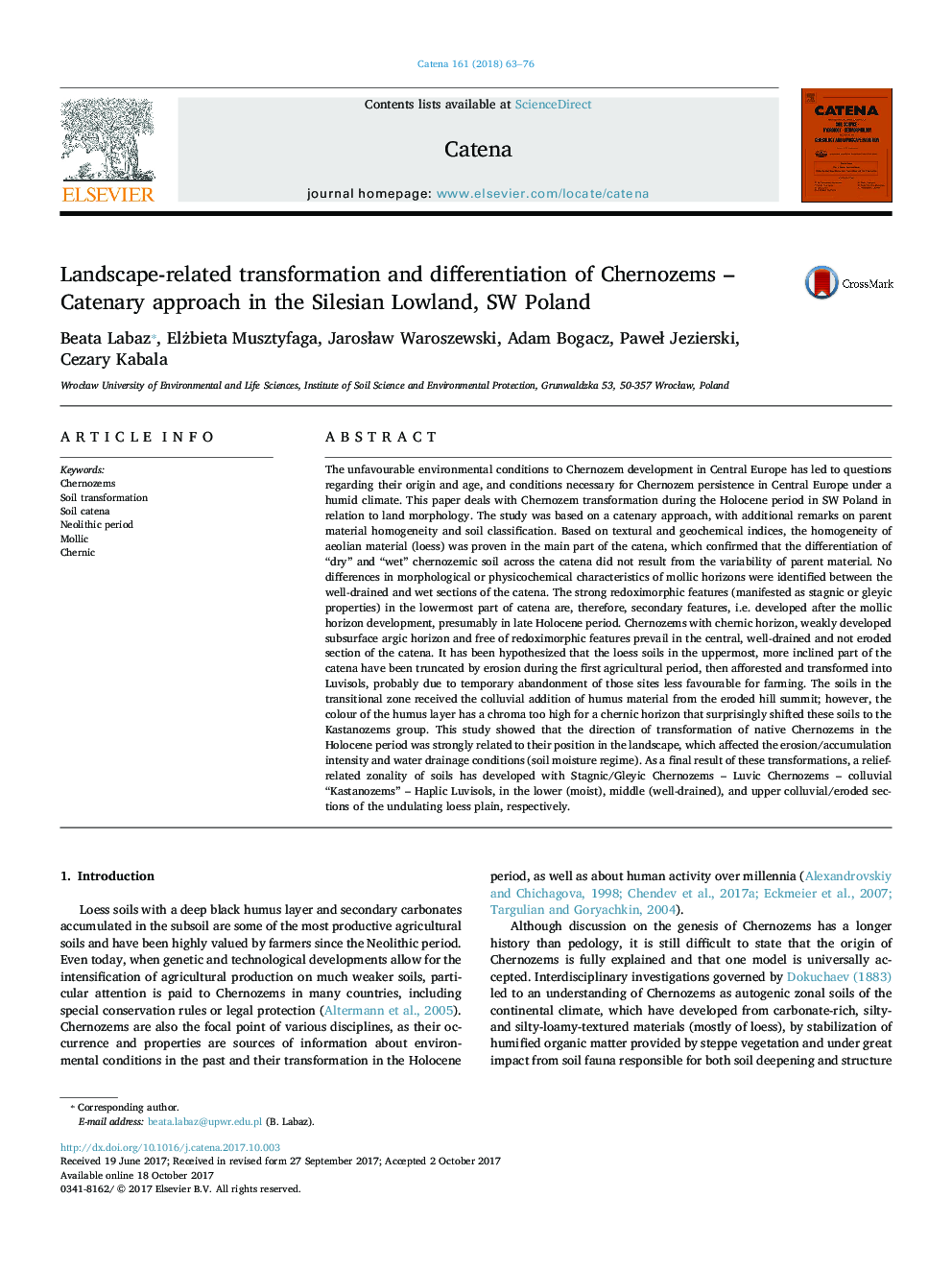| Article ID | Journal | Published Year | Pages | File Type |
|---|---|---|---|---|
| 5769836 | CATENA | 2018 | 14 Pages |
â¢Transformation of Chernozems in relation to landscape position was studied.â¢Chernozems in the uppermost section have been eroded, then transformed into Luvisols.â¢Colluvial additions in the upper section converted Chernozems into (pseudo) Kastanozems.â¢Luvic Chernozems are preserved in a nearly flat, well drained and not eroded zone.â¢Chernozems in the low moist positions got strong redoximorphic features (Mollic Gleysols).
The unfavourable environmental conditions to Chernozem development in Central Europe has led to questions regarding their origin and age, and conditions necessary for Chernozem persistence in Central Europe under a humid climate. This paper deals with Chernozem transformation during the Holocene period in SW Poland in relation to land morphology. The study was based on a catenary approach, with additional remarks on parent material homogeneity and soil classification. Based on textural and geochemical indices, the homogeneity of aeolian material (loess) was proven in the main part of the catena, which confirmed that the differentiation of “dry” and “wet” chernozemic soil across the catena did not result from the variability of parent material. No differences in morphological or physicochemical characteristics of mollic horizons were identified between the well-drained and wet sections of the catena. The strong redoximorphic features (manifested as stagnic or gleyic properties) in the lowermost part of catena are, therefore, secondary features, i.e. developed after the mollic horizon development, presumably in late Holocene period. Chernozems with chernic horizon, weakly developed subsurface argic horizon and free of redoximorphic features prevail in the central, well-drained and not eroded section of the catena. It has been hypothesized that the loess soils in the uppermost, more inclined part of the catena have been truncated by erosion during the first agricultural period, then afforested and transformed into Luvisols, probably due to temporary abandonment of those sites less favourable for farming. The soils in the transitional zone received the colluvial addition of humus material from the eroded hill summit; however, the colour of the humus layer has a chroma too high for a chernic horizon that surprisingly shifted these soils to the Kastanozems group. This study showed that the direction of transformation of native Chernozems in the Holocene period was strongly related to their position in the landscape, which affected the erosion/accumulation intensity and water drainage conditions (soil moisture regime). As a final result of these transformations, a relief-related zonality of soils has developed with Stagnic/Gleyic Chernozems - Luvic Chernozems - colluvial “Kastanozems” - Haplic Luvisols, in the lower (moist), middle (well-drained), and upper colluvial/eroded sections of the undulating loess plain, respectively.
